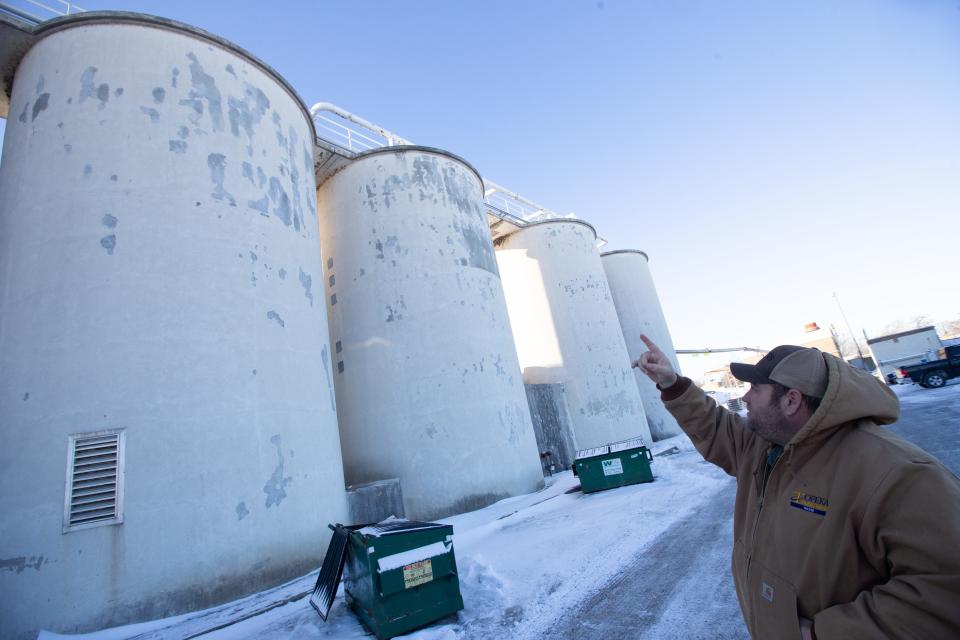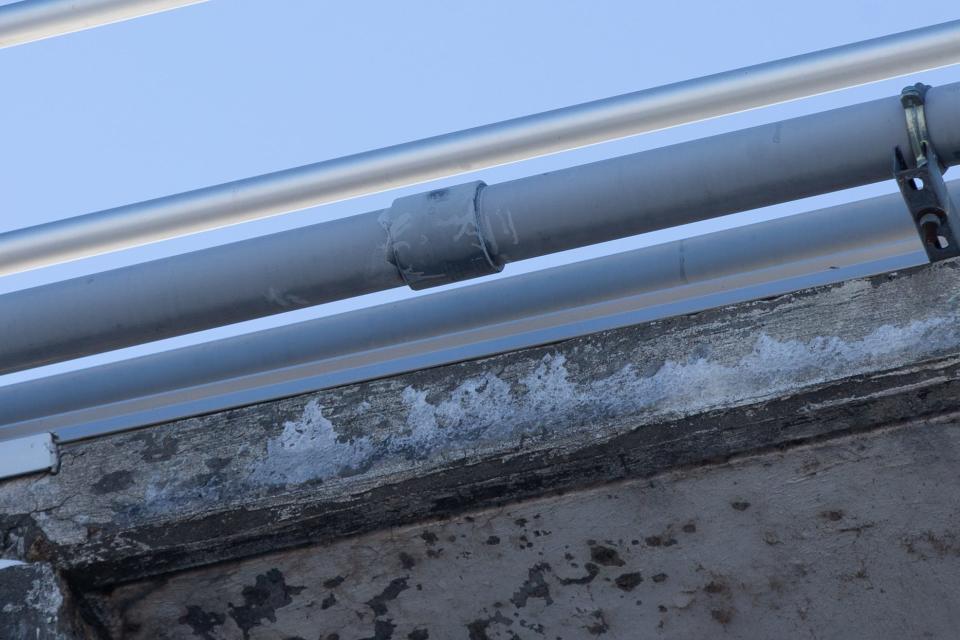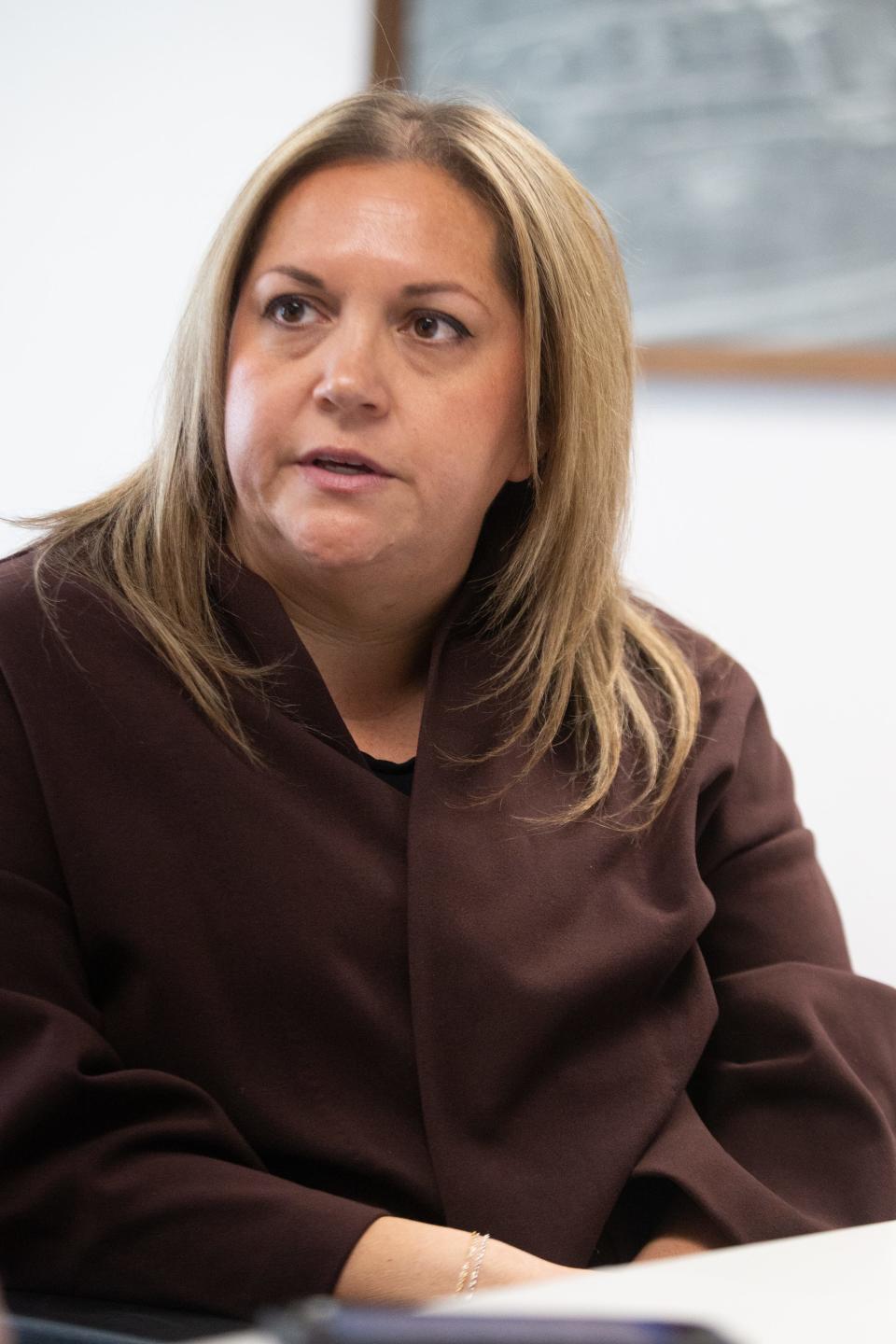Topeka water customers asked to start flushing lines to end boil water advisory quicker
Topeka's city government late Tuesday encouraged city water service customers to start "flushing" water through their supply systems to help ensure that fresh water reaches every customer and the boil water advisory ends more quickly.
Flushing a system varies based on the size of a building, the city said on its Facebook page.
"Generally, customers should turn on all indoor faucets in their home or business for 10-15 minutes to flush approximately 40 gallons of water through their system," it said. "Due to outdoor weather conditions, consider using only indoor faucets like sinks, tubs, toilets and other washing appliances."
For homes or businesses with larger water heaters, flush for an additional 10-15 minutes, the city said.
How much water does Topeka need to flush?
Sixty million gallons of water must either be boiled or discarded in the wake of the discovery of potential contamination in the city of Topeka's water supply, said city utilities director Sylvia Davis.
A boil water advisory issued Sunday by the city will consequently need to last until at least Friday because of the large volume of water left potentially contaminated, she told The Capital-Journal.
"Our distribution system holds approximately 60 million gallons of water, so — as you can imagine — it's going to take a long time to flush out and turn over 60 million gallons of water," she said.
The situation left the city's tap water unfit for drinking by humans or animals, though it's still OK for bathing, doing laundry or using in a dishwasher, said Rosie Nichols, co-interim communications director for the city.
The city's water system serves more than 57,000 taps, Davis said.

Extreme temperatures likely caused PVC pipe to break
Topekans remained Tuesday under the boil water advisory the Kansas Department of Health and Environment issued Sunday morning after chlorine residual levels at the city's water treatment plant were found to not meet their required minimum standard, putting the system at risk for bacterial contamination.
A broken PVC pipe, used to transport chlorine gas along the exterior of a building at the plant at 3245 N.W. Waterworks Drive, appears to be at fault.
"We expect it cracked due to the extreme temperatures," the city said in a document it posted on its website answering frequently asked questions regarding the advisory.
Chlorine is a disinfectant, which kills bacteria, Davis said.
The city must make sure the water it provides contains the appropriate amount of chlorine from the time it leaves the plant until it reaches the customer who's farthest away from that center, she said.
If its water may have become contaminated, Davis said, the city must tell the public not to drink any unboiled water that was in its system during the time that may have happened.

'We knew it was a chlorine issue'
The break announced Sunday was discovered after staff at the water treatment center noticed that "treatment numbers" were going down, meaning water quality was declining, Davis said.
"We knew it was a chlorine issue because we were not getting the chlorine numbers that we would expect to get," she said.
After adjusting chemical dosages failed to resolve the problem, an employee found the break in a PVC pipe that's 3 inches in diameter and located along the edge of the roof of a building at the water treatment plant, Davis said.
The city staff "jumped on this immediately," she said.
The city was able to quickly resolve the problem by redirecting the pipeline gas to a backup line that serves the same function, Davis said.

City has been 'close a few times' to issuing boil water advisories
Boil water advisories are uncommon for Topeka, with none on record as having occurred here in recent years, Davis said.
"We've been close a few times," she said.
Once the potentially contaminated water has been flushed from the city's system, the city will be able to start testing to see if its water contains adequate chlorine and if any bacteria is present, Davis said.
The KDHE is authorized to end the advisory if the water is found to meet its standards, she said.
Davis said she understands it's a "true inconvenience" for people to have to think about boiling their water before drinking it or buying bottled water to meet their needs.
She stressed that the city has a "good track record" of providing clean, safe drinking water to the public.
"We know that this is not a place where any of us want to be, but we're trying as best we can to get us out of it," Davis said.
Here's how the city makes its drinking water safe
Davis talked Tuesday about the city's process for treating the water in its supply.
That water is pumped out of the Kansas River and goes to three large basins, she said.
In each, a solid substance called a "polymer" is added to encourage bonding between negatively charged particles.
Pure chlorine gas is added next as the initial disinfectant to get the bacteria out.
Ammonia is added to create a disinfectant called "chloramine," and then a liquid flocculant is introduced to encourage clumping.
The chemicals clump together and sink, allowing the water to progress to the filters. The water then settles through a sand/anthracite coal filter that catches any remaining particles.
From there, the water is sent to clear wells, the city distribution system and eventually people's faucets.
What does the boil water advisory ask residents to do?
In its boil water advisory, the city asked residents to take the following precautions.
• Use bottled water or boil tap water for one minute before drinking it or using it to prepare food.
• Water used for bathing doesn't need to be boiled, but adults should supervise children who are bathing to make sure they don't ingest water. People with cuts or severe rashes may want to consult their physician before bathing.
• If your tap water appears dirty, flush the water lines by letting the water run until it clears.
• Dispose of ice cubes. Don't use ice from household automatic icemakers.
• Disinfect dishes and other food contact surfaces by immersing them for at least one minute in clean tap water that contains one teaspoon of unscented household bleach per gallon of water.
• For answers to consumer questions, email Topeka's city government at citycommunications@topeka.org or call the KDHE at 785-296-5514.
• Restaurants and other food establishments with questions about the boil water advisory's impact on their business may email the Kansas Department of Agriculture's food safety and lodging program at kda.fsl@ks.gov or call it at 785-564-6767.
Contact Tim Hrenchir at threnchir@gannett.com or 785-213-5934.
This article originally appeared on Topeka Capital-Journal: Topeka water customers asked to flush lines to end boil water advisory

